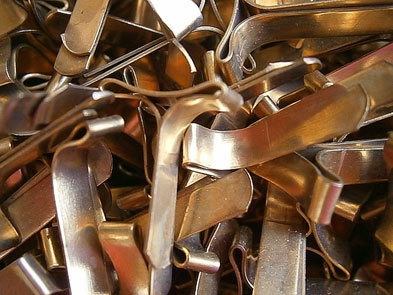
Shearing occurs when an object’s parallel internal surfaces slide past one another, resulting in a breakage. The shear stress that enables this occurrence is often created by two opposite external forces pushing the object from both sides. Shearing, however, isn’t always the destructive force that creates earthquake. It has many beneficial uses, too. One particular industry that greatly benefits from the power of shearing is metal manufacturing. For the longest time, shearing has been one of the most widely used methods for cutting metals.
What is Metal Shearing?
There are numerous techniques manufacturers use for cutting metals, including grinding, turning, and drilling. Some are assisted with laser, high-speed waterjet, and heat. Each of these techniques suit specific applications. For instance, for making intricate sculptures, waterjet cutting is the best bet due to its flexible settings. Some techniques, however, such as metal shearing, prove more efficient than others, which is why they are mostly employed in mass productions. So what is shearing in metal work?
Also known as die cutting, metal shearing is the process of cutting straight lines on a metal die or stock by forcing two blades past each other. The metal shearing process is similar to how scissors work except all points along the edges of both blades meet at the same time. Sometimes, though, the blades can be mounted at an angle to reduce the shearing force required. The ultimate goal in shear cutting is to prevent the formation of chips and eliminate the need for burning or melting, which badly affects the properties of the metal die. Metal shearing is the preferred cutting method of most bronze and brass suppliers, such as Rotax Metals, whose products come in sheets or plates.
Characteristics and Tool System
Metal shearing can be characterized by the blurred, slightly deformed straight line it creates. For this reason, it is not an effective method for creating fine cuts, let alone for cutting intricate designs on metal plates. If anything, metal shearing is just the first step of a multifarious, elaborate metal working process, which often involves other metal cutting techniques.
There are several types of tool systems used in the shearing of metal. One allows for the shearing of sheet metal and plate using a squaring or bow tie shear. Another shears angle materials. And the last one shears bar stock using a bar shear. Any aluminum and copper sheet supplier should know these main tools along with other more specialized shearing tools and which applications each of them can be effectively used for.
How does a metal sheer work?
A metal shear consists of different working parts. It has two blades—a moving blade, called punch, and a fixed blade, called die. The punch pushes the workpiece against the die until a clearance of 5% to 40% of the thickness of the metal is reached. Clearance is the distance between the point where the cutting takes places and the point where the sheared side of the metal totally separates from the other side.
It’s important to note that the clearance has a major impact on both the quality of the cut and the machine’s energy efficiency. Insufficient clearance may result in the two parts of the stock still slightly attached, which usually entails manual prying to separate them. Too much clearance, on the other hand, may lead to roll-over or heavy burring, which is just as damaging to the metal.
Benefits of Metal Shearing
Apparently, there are many benefits to the shearing metal process. In fact, they are the reasons why this technique isn’t going to be faced out anytime soon despite the introduction of more advanced metal cutting techniques. Here are some of them.
1. It makes straight line cuts in flat sheet stock with cleaner edges than those done by traditional torch cutting.
2. It doesn’t create chips on the metal.
3. It doesn’t require heating or melting, which preserves the metal’s property.
4. It produces minimal to no kerf.
5. No loss of material, which equates to minimal waste.
6. It is a cost-effective option for high-output operations.
When you see all of these features in the metal supplies that you are purchasing for your project, you can easily tell that they have been sheared. Most manufacturers use metal shearing so you’ll definitely see a lot of products made through this process in metal supply stores, especially from a copper sheet supplier and other stores that specialize in soft metals. Just be careful when choosing your supplier as not all of them get their materials from reliable sources.
Sources:
http://www.advantagefabricatedmetals.com/shearing-process.html


